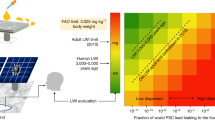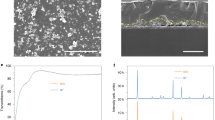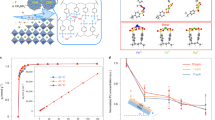Abstract
LEAD azide is still prepared by using, in principle, a method first described by Curtius1. This method involves reacting a soluble inorganic azide, preferably sodium azide, with a soluble lead salt, preferably lead nitrate or lead acetate, in aqueous solution whereby lead azide is formed as a precipitate. The precipitate is always contaminated with the cation coming from the azide and the anion coming from the lead salt. Purification by recrystallization is difficult for the following reasons: The solubility of lead azide in pure water is very small. Using an ammonium acetate solution in which the solu bility is higher introduces new impurities. Furthermore, lead azide has a tendency to detonate spontaneously on recrystallization2. A direct synthesis of lead azide from lead oxide and hydrazoic acid yields inhomogeneous yellow products because the lead azide formed on the surface of the lead oxide grains is very insoluble and prevents further reaction.
This is a preview of subscription content, access via your institution
Access options
Subscribe to this journal
Receive 51 print issues and online access
$199.00 per year
only $3.90 per issue
Buy this article
- Purchase on SpringerLink
- Instant access to full article PDF
Prices may be subject to local taxes which are calculated during checkout
Similar content being viewed by others
References
Curtius, T., Ber., 24, 3345 (1891).
Bowden, F. P., Proc. Roy. Soc., A, 246, 150 (1958). Kaufman, J. V. R., ibid., 153. Rogers, G. T., ibid., 153.
Sommer, F., and Pincas, H., Ber., 48, 1967 (1915).
Author information
Authors and Affiliations
Rights and permissions
About this article
Cite this article
REITZNER, B., MANNO, R. A New Synthesis of Lead Azide. Nature 198, 991 (1963). https://doi.org/10.1038/198991a0
Issue date:
DOI: https://doi.org/10.1038/198991a0



